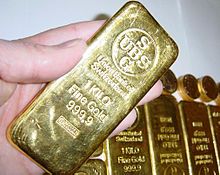Cross posted from The Stars Hollow Gazette
This is your morning Open Thread. Pour your favorite beverage and review the past and comment on the future.
Find the past “On This Day in History” here.
Click on image to enlarge
June 6 is the 157th day of the year (158th in leap years) in the Gregorian calendar. There are 208 days remaining until the end of the year.

On this day in 1933, eager motorists park their automobiles on the grounds of Park-In Theaters, the first-ever drive-in movie theater, located on Crescent Boulevard in Camden, New Jersey.
The drive-in theater was the creation of Camden, New Jersey, chemical company magnate Richard M. Hollingshead, Jr., whose family owned and operated the R.M. Hollingshead Corporation chemical plant in Camden. In 1932, Hollingshead conducted outdoor theater tests in his driveway at 212 Thomas Avenue in Riverton. After nailing a screen to trees in his backyard, he set a 1928 Kodak projector on the hood of his car and put a radio behind the screen, testing different sound levels with his car windows down and up. Blocks under vehicles in the driveway enabled him to determine the size and spacing of ramps so all automobiles could have a clear view of the screen. Following these experiments, he applied August 6, 1932, for a patent of his invention, and he was given U.S. Patent 1,909,537 on May 16, 1933. That patent was declared invalid 17 years later by the Delaware District Court.
Hollingshead’s drive-in opened in New Jersey June 6, 1933, on Admiral Wilson Boulevard at the Airport Circle in Pennsauken, a short distance from Cooper River Park. It offered 500 slots and a 40 by 50 ft (12 by 15 m) screen. He advertised his drive-in theater with the slogan, “The whole family is welcome, regardless of how noisy the children are.” (The first film shown was the Adolphe Menjou film Wife Beware.) The facility only operated three years, but during that time the concept caught on in other states. The April 15, 1934, opening of Shankweiler’s Auto Park in Orefield, Pennsylvania, was followed by Galveston’s Drive-In Short Reel Theater (July 5, 1934), the Pico in Los Angeles (September 9, 1934) and the Weymouth Drive-In Theatre in Weymouth, Massachusetts (May 6, 1936). In 1937, three more opened in Ohio, Massachusetts and Rhode Island, with another 12 during 1938 and 1939 in California, Florida, Maine, Maryland, Massachusetts, Michigan, New York, Texas and Virginia. Michigan’s first drive-in was the Eastside, which opened May 26, 1938, in Harper Woods near Detroit.
Early drive-in theaters had to deal with noise pollution issues. The original Hollingshead drive-in had speakers installed on the tower itself which caused a sound delay affecting patrons at the rear of the drive-in’s field. Attempts at outdoor speakers next to the vehicle did not produce satisfactory results. In 1941, RCA introduced in-car speakers with individual volume controls which solved the noise pollution issue and provided satisfactory sound to drive-in patrons.




